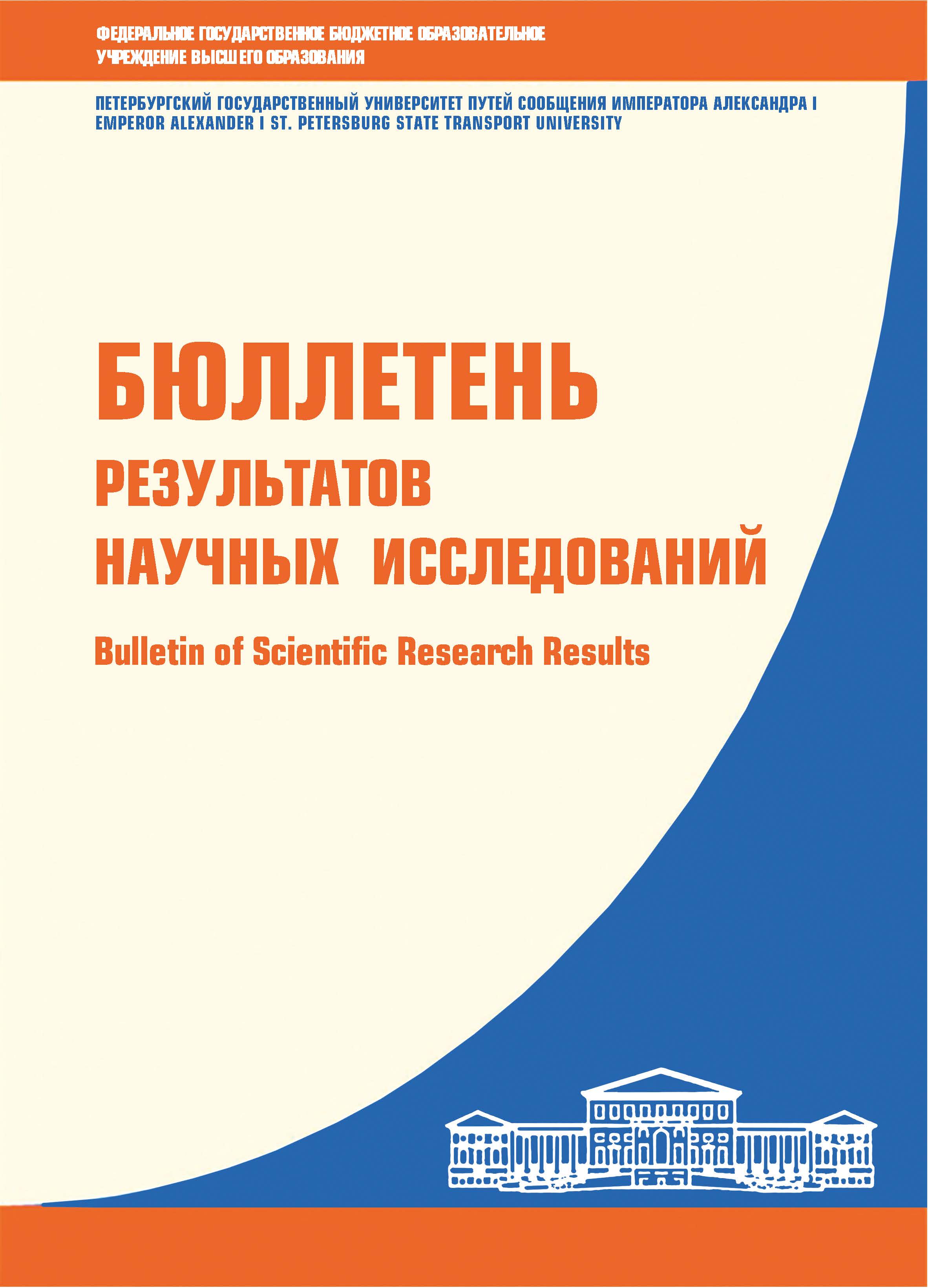Russian Federation
Russian Federation
Russian Federation
Russian Federation
Purpose: determine the causes of defects in rails in areas of circulation of trains of increased weight and length through modeling the operation of rails in curved sections of the railway track using digital twins. Methods: t study the influence of various factors on rail wear in curved sections of the track, software systems were used ased on the numerical solution of differential equations for the movement of rolling stock and the operation of the railway track under the train. To determine the stresses in the rails in order to predict the development of contact-fatigue defects, dynamic calculations using the finite element method were used. Results: it was revealed that in order to reduce rail wear in a curved section of the track in sections with predominantly freight traffic, the elevation of the outer rail must be calculated based on the actually realized speeds of freight trains. It has been established that at the moment the influence of the amount of rail inclination on rail wear has not been sufficiently studied. As an analysis of the position of the rails at various inclines has shown, for the curve under consideration it is most advisable to use a 1/30 inclination within the limits of a circular curve and with a 1/20 to 1/30 inclination within the transition curve. To reduce the likelihood of contact-fatigue defects occurring in such areas, it is necessary to provide for the implementation of measures to lubricate the side working edge of the outer rail thread and the rolling surface of the inner rail thread within the entire curve. Practical importance: the research results indicate the need to revise the approach to calculating the elevation of the outer rails in curves with heavy freight train traffic. The possibility of extending the service life of rails by revising the system for planning and implementing work on lubricating and grinding rails in curves in areas where trains of increased mass and length operate
lateral wear, rail tilt, stress in rails, heavy and long trains, rail defects, wheel-rail interaction
1. Tehnologii zavtrashnego dnya: interv'yu s M. I. Mehedovym / besedoval A. Aleev // Gudok. 2024. № 58 (27880). S. 4.
2. Optimizaciya vzaimodeystviya v sisteme «koleso — rel's» / S. A. Vinogradov [i dr.] // Zheleznodorozhnyy transport. 2023. № 3. S. 37–45.
3. Rukovodstvo po opredeleniyu vozvysheniya naruzhnogo rel'sa v krivyh na osnove dvuhurovnevoy sistemy skorostey (utv. rasporyazheniem OAO «RZhD» ot 20.12.2021 № 2897/r).
4. L ysyuk V. S., Sazonov V. N., B ashkatova L . V. Prochnyy i nadezhnyy zheleznodorozhnyy put'. M.: Akademkniga, 2003. 589 s.
5. L ysyuk V. S. Sravnitel'nye ispytaniya dolgovechnosti rel'sov // Put' i putevoe hozyaystvo. 2005. № 2. S. 23–25.
6. Vliyanie velichiny osevyh nagruzok podvizhnogo sostava na kontaktno-ustalostnuyu dolgovechnost' rel'sov / V. S. Kossov [i dr.] // Vestnik Nauchno-issledovatel'skogo instituta zheleznodorozhnogo transporta (Vestnik VNIIZhT). 2018. № 77 (3). S. 149–156. DOI:https://doi.org/10.21780/2223-9731-2018-77-3-149-156.
7. Osnovy ustroystva i raschetov zheleznodorozhnogo puti / T. G. Yakovleva [i dr.]; pod red. S. V. Amelina i T. G. Yakovlevoy. M.: Transport, 1990. 367 s.
8. Sidorova E. A., Pevzner V. O., Chechel'nickiy A. I. Pokazateli silovogo vzaimodeystviya puti i podvizhnogo sostava pri dvizhenii gruzovogo vagona po dlinnym nerovnostyam s uchetom deystviya prodol'nyh sil // Vestnik Nauchno-issledovatel'skogo instituta zheleznodorozhnogo transporta (Vestnik VNIIZhT). 2021. № 80 (6). S. 359–365. DOI:https://doi.org/10.21780/2223- 9731-2021-80-6-359-365.
9. Matyunin V. A., Parahnenko I. L . Vliyanie rezhimov vedeniya poezda na prodol'nye i bokovye sily, voznikayuschie v krivyh uchastkah // Molodaya nauka Sibiri. 2021. № 1 (11). URL: https://mnv.irgups.ru/toma/111–2021 (data obrascheniya: 18.04.2024).
10. Kossov V. S., Krasnov O. G. Vozdeystvie sdvoennyh tyazhelovesnyh poezdov v rezhimah tormozheniya na verhnee stroenie puti // Put' i putevoe hozyaystvo. 2020. № 11. S. 2–6.
11. Yakovlev V. F. Issledovanie sil vzaimodeystviya, deformaciy i napryazheniy v zone kontakta zheleznodorozhnyh koles i rel'sov: diss. … dokt. tehn. nauk. SPb.: L IIZhT, 1964.
12. Analysis of residual deformations accumulation intensity factors of the railway track located in the polar zone / E. Chernyaev [et al.] // Transportation Soil Engineering in Cold Regions. Proceedings of TRANSOILCOLD 2019. Series: Lecture Notes in Civil Engineering. Vol. 49. Singapore, 2020. P. 381–388.
13. B lazhko L . S., Shtykov V. I., Chernyaev E. V. Uvelichenie nesuschey sposobnosti zemlyanogo polotna v slabovodopronicaemyh gruntah // Put' i putevoe hozyaystvo. 2019. № 12. S. 26–29.









